Items Similar to Rare Yue Celadon Chicken-Head Ewer, Jin-Southern Dynasty
Want more images or videos?
Request additional images or videos from the seller
1 of 14
Rare Yue Celadon Chicken-Head Ewer, Jin-Southern Dynasty
$6,950
$13,90050% Off
£5,313.65
£10,627.2950% Off
€6,120.25
€12,240.4950% Off
CA$9,739.08
CA$19,478.1650% Off
A$10,872.77
A$21,745.5450% Off
CHF 5,697.17
CHF 11,394.3350% Off
MX$133,093.35
MX$266,186.7050% Off
NOK 72,354.08
NOK 144,708.1550% Off
SEK 68,220.71
SEK 136,441.4250% Off
DKK 45,676.02
DKK 91,352.0450% Off
Shipping
Retrieving quote...The 1stDibs Promise:
Authenticity Guarantee,
Money-Back Guarantee,
24-Hour Cancellation
About the Item
Chicken-head ewers are among the most distinct and emblematic pottery pieces from the Han (206 BC ~ AD 220) to the Tang dynasties. Their production commenced during the Jin dynasty in the southern Yue kilns of Zhejiang province. The design was quickly produced by other southern area and eventually embraced by northern celadon kilns.
The widespread application of such ceramic vessels, including in the burial sites of emperors, underscores the fortuitous connotations of the chicken motif. Chickens were considered to possess the capability to dispel evil, heal ailments, and produce other benevolent effects.
Period : Jin-Southern Dynasty (266 ~ 589 AD)
Type : Ewer
Medium : Yue celadon(Stoneware)
Dimension : 24cm(Height) x 8.5cm(Mouth Diameter)
Provenance : The piece was acquired in Hong Kong in the late 1990s
Condition : Good(There are traces of natural oxidation on the mouth and neck areas)
Reference :
1) Ashmolean Museum - Accession no.EA 1956.286
(Type : Closely related)
2) Sotheby's Hongkong 27 November 2020 - CHINA / 5000 YEARS 博古五千 - Lot 384
(Price Range : 260,000HKD~360,000HKD / Type : Closely related)
* Yue Celadon
Yue celadon, also known as Yue ware, is a type of Chinese pottery with a celadon glaze, originating from the eastern Han dynasty (25-220 AD) in the Zhejiang province. The name 'Yue' comes from the Yue kilns which were among the earliest to develop the celadon technique. Yue ware is known for its jade-like glaze, which can range in color from bluish-green to olive green.
Yue celadon was highly regarded during its time and was the first Chinese ware to be imported in large quantities to the Middle East and Africa, significantly influencing the development of ceramics in those regions. The production of Yue ware continued to evolve, and during the Tang dynasty (618-907 AD), it became more refined with more complex shapes and decorations. By the time of the Song dynasty (960~1279 AD), it had greatly influenced other kiln traditions, leading to the development of the classic longquan celadon, which became one of China’s most famous ceramic products.
Yue celadon traditionally embodies elements of auspiciousness and good fortune in Chinese culture. The jade-like celadon glaze is often associated with longevity and health. Various motifs and shapes inscribed on the pottery frequently symbolize luck and prosperity. For example, lotus patterns may represent purity and immortality, while animal figures like the lion symbolizes power, courage, and strength. Lions are considered protectors that ward off evil spirits and bring forth good luck. Furthermore, Yue celadon wares were commonly used as tomb offerings in ancient China, believed to bring fortune and well-being to the deceased in the afterlife.
- Dimensions:Height: 9.45 in (24 cm)Diameter: 3.35 in (8.5 cm)
- Style:Han (Of the Period)
- Materials and Techniques:Pottery,Glazed
- Place of Origin:
- Period:
- Date of Manufacture:266 - 589 AD
- Condition:Minor fading. There are traces of natural oxidation on the mouth and neck areas.
- Seller Location:seoul, KR
- Reference Number:1stDibs: LU9577242345202
About the Seller
4.8
Gold Seller
Premium sellers maintaining a 4.3+ rating and 24-hour response times
Established in 1999
1stDibs seller since 2023
38 sales on 1stDibs
Typical response time: <1 hour
- ShippingRetrieving quote...Shipping from: seoul, Korea South
- Return Policy
Authenticity Guarantee
In the unlikely event there’s an issue with an item’s authenticity, contact us within 1 year for a full refund. DetailsMoney-Back Guarantee
If your item is not as described, is damaged in transit, or does not arrive, contact us within 7 days for a full refund. Details24-Hour Cancellation
You have a 24-hour grace period in which to reconsider your purchase, with no questions asked.Vetted Professional Sellers
Our world-class sellers must adhere to strict standards for service and quality, maintaining the integrity of our listings.Price-Match Guarantee
If you find that a seller listed the same item for a lower price elsewhere, we’ll match it.Trusted Global Delivery
Our best-in-class carrier network provides specialized shipping options worldwide, including custom delivery.More From This Seller
View AllRare Yue Celadon Chicken-Head Ewer, Jin-Southern Dynasty
Located in seoul, KR
Chicken-head ewers are among the most distinct and emblematic pottery pieces from the Han (206 BC - AD 220) to the Tang (618-907) dynasties. Their production commenced during the Jin...
Category
Antique 15th Century and Earlier Hong Kong Han Antiquities
Materials
Celadon, Stoneware
$7,160 Sale Price
60% Off
Rare Yue Celadon Chicken-Head Ewer, Jin-Southern Dynasty
Located in seoul, KR
Chicken-head celadon is among the most distinct and emblematic piece from the dynamic yet innovative era spanning from the Han (206 BC - AD 220) to the Tang (618-907) dynasties. Thei...
Category
Antique 15th Century and Earlier Chinese Han Antiquities
Materials
Celadon
$3,495 Sale Price
50% Off
Yue Celadon Ewer, Late Tang-Northern Song Dynasty
Located in seoul, KR
This Yue ware celadon ewer features a gracefully rounded body that expands smoothly, complemented by a wide, flaring mouth. The translucent olive-green glaze envelops the surface, en...
Category
Antique 15th Century and Earlier Hong Kong Tang Antiquities
Materials
Celadon
$3,150 Sale Price
30% Off
A Molded Longquan Celadon 'Fu Shou' Ewer, Ming Dynasty
Located in seoul, KR
One side of the vase showcases a panel with the Shou character at its center, symbolizing longevity, while the opposite side displays the Fu character, signifying luck. The neck of the vase is adorned with leaves. There are similar types and decoration but varying in shape, resembling a pear, all from the same era and crafted in celadon, often referred to as 'fu shou' vases.
Period: Yuan-Ming Dynasty (1271-1644)
Region: Longquan, China
Medium: Celadon
Type: Ewer
Provenance : Acquired in late 1990s from Hongkong
Reference
1) British Museum - Museum number 1931,1118.5
(Type : Closely related)
2) Christies NEW YORK 24–25 MAR 2022 - Important Chinese Ceramics and Works of Art - Lot 1105
(Price realised : 9,450 USD / Type : Related)
3) Sotheby's New York 19 March 2024 - Chinese Art - Lot 172
(Price range : 15,000 USD - 20,000 USD / Type : Related)
* Ming Dynasty Longquan Celadon
Longquan celadon from the Ming Dynasty typically exhibits a more robust and heavier stoneware body compared to its Song Dynasty predecessors. The Ming era saw an evolution in celadon glaze, achieving a wider spectrum of green hues, from olive to bluish-greens. Ming celadons...
Category
Antique 15th Century and Earlier Hong Kong Ming Antiquities
Materials
Celadon
$1,995 Sale Price
50% Off
Rare Yue Celadon-Glazed Vessel, Jin dynasty (265-420)
Located in seoul, KR
A Yue celadon vessel from the Jin Dynasty period, notable for its characteristic greenish-glazed pottery which was prominent during this time. The vessel features a globular body wit...
Category
Antique 15th Century and Earlier Hong Kong Han Antiquities
Materials
Stoneware
$2,535 Sale Price
35% Off
Celadon Ewer with Straight Handle, Tang to Northern Song Dynasty
Located in seoul, KR
Celadon-glazed ewer characterized by its simple and functional design. The piece features a straight handle extending horizontally from the body and a short spout for pouring liquids...
Category
Antique 15th Century and Earlier Hong Kong Tang Antiquities
Materials
Celadon
$2,925 Sale Price
35% Off
You May Also Like
Korean Celadon Glazed Ritual Ewer, Kundika, Goryeo Dynasty, 13th-14th Century
Located in Austin, TX
An understated and very heavily potted celadon glazed Korean ritual ewer or water sprinkler, kundinka, Goryeo Dynasty, 13th-14th century.
The unusu...
Category
Antique 15th Century and Earlier Korean Ceramics
Materials
Stoneware
Antique Chinese Yue Chicken Head Spout Ewer
Located in Point Richmond, CA
A globular stoneware body that is well potted with a cup shaped mouth supported on a narrow tall neck. The characteristic chicken head form serves as the spout. The handle is pulled ...
Category
Antique 15th Century and Earlier Chinese Other Ceramics
Materials
Ceramic
Japanese Ko-Seto Stoneware Ewer with Carved Design
Located in Atlanta, GA
On offer is a rare Ko-seto (old seto) stoneware ewer from Kamakura period (12-14th century) Japan. The exceptionally heavily potted ewer is made of stoneware. The main body was likely hand-coiled with individually built handle, sprout and wheel-made neck and mouth assembled. It takes the basic form from the contemporary Chinese ewer...
Category
Antique 15th Century and Earlier Japanese Archaistic Ceramics
Materials
Stoneware
Antique Chinese pottery green-glazed vase/[Liao Dynasty]/10th century
Located in Sammu-shi, Chiba
We are pleased to introduce a glazed ceramic vase from the Liao dynasty of China, dating from the 10th century, about 1,000 years ago.
The Liao dynasty was established by the Qidan ...
Category
Antique 15th Century and Earlier Chinese Other Vases
Materials
Pottery
Chinese Yueyao Celadon Glazed Jar 'Guan', Five Dynasties, 10th Century
Located in Austin, TX
A sublime Chinese Yueyao glazed guan jar with incised decoration and applied handles, five dynasties period (907- 979 AD), China.
The vessel of somewhat flattened globular form, w...
Category
Antique 15th Century and Earlier Chinese Tang Ceramics
Materials
Stoneware
Korean Goryeo Celadon Glazed Bottle Vase with Kintsugi Repair, 12th Century
Located in Austin, TX
A sublime Korean celadon glazed cup mouth bottle vase, Goryeo Dynasty, 12th century, Korea.
The elegant bottle vase, originally used to serve wine, features a gorgeous Goryeo celadon...
Category
Antique 15th Century and Earlier Korean Ceramics
Materials
Stoneware
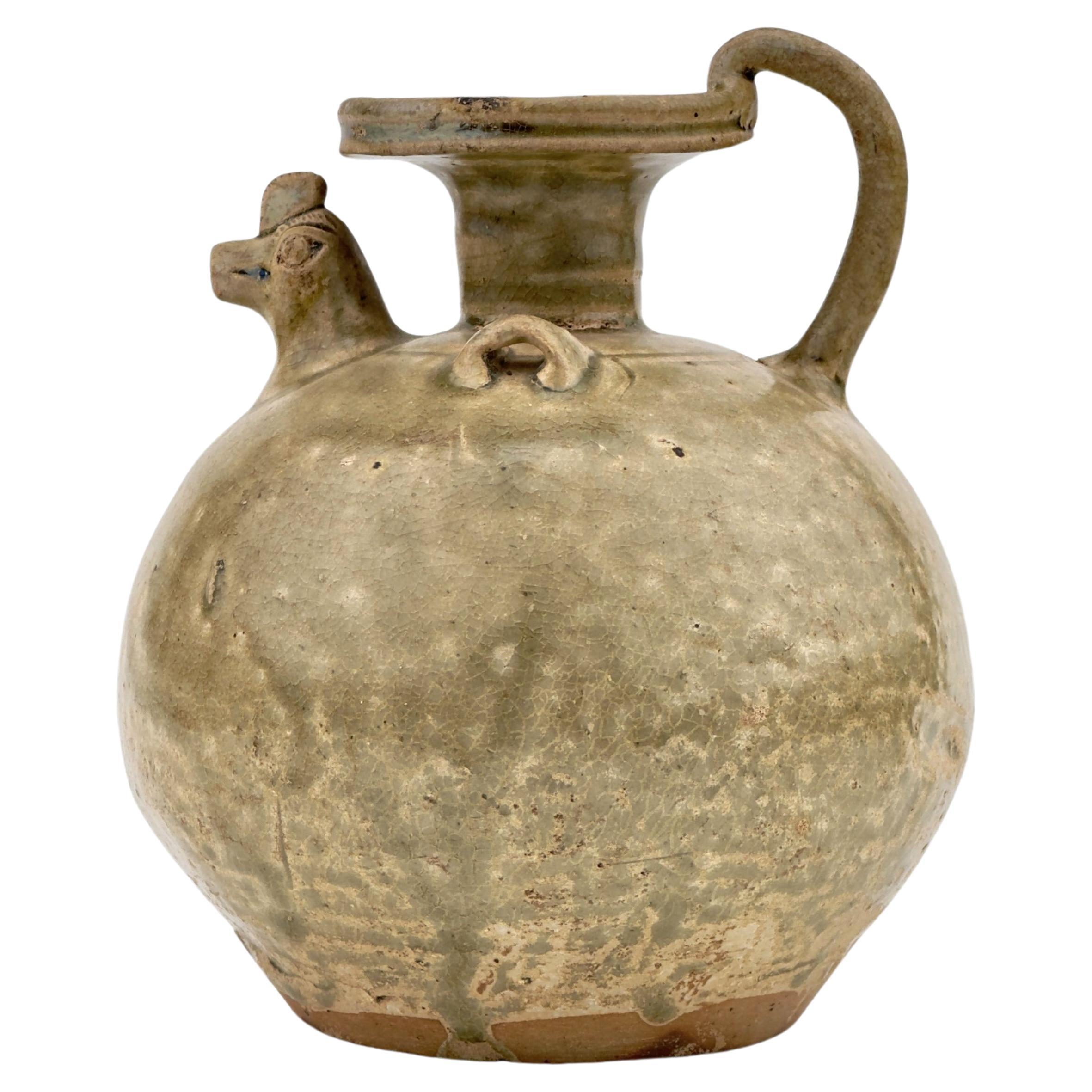
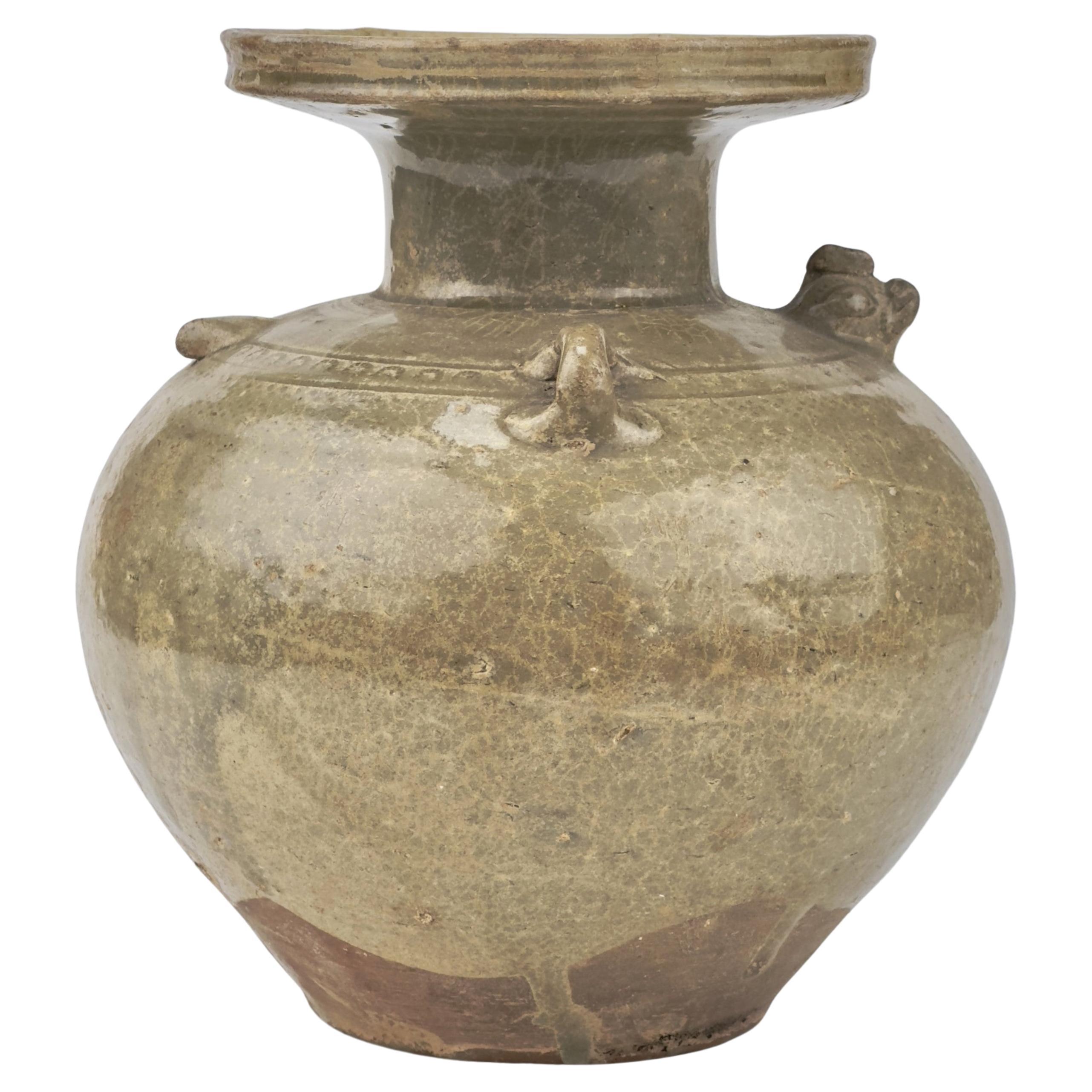
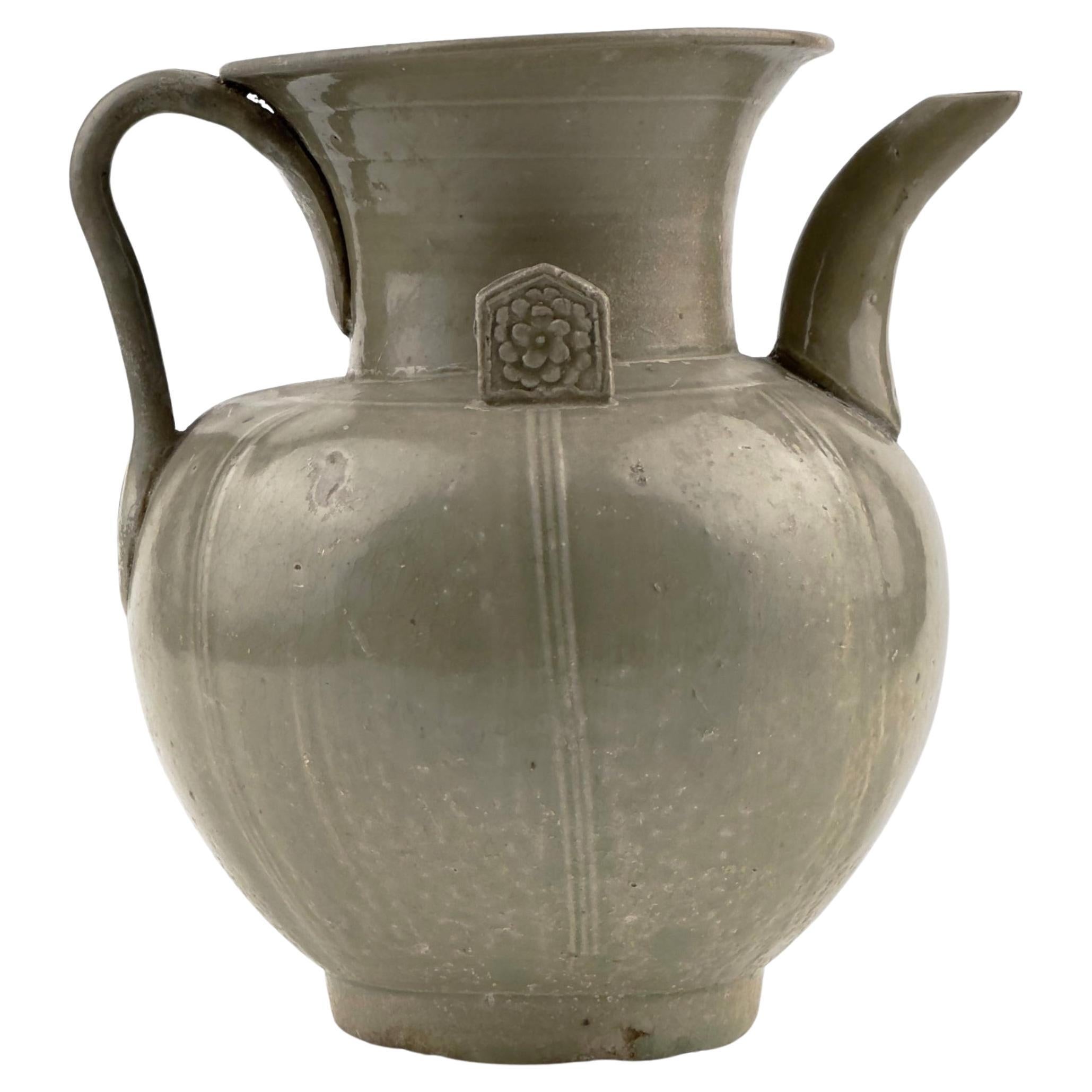
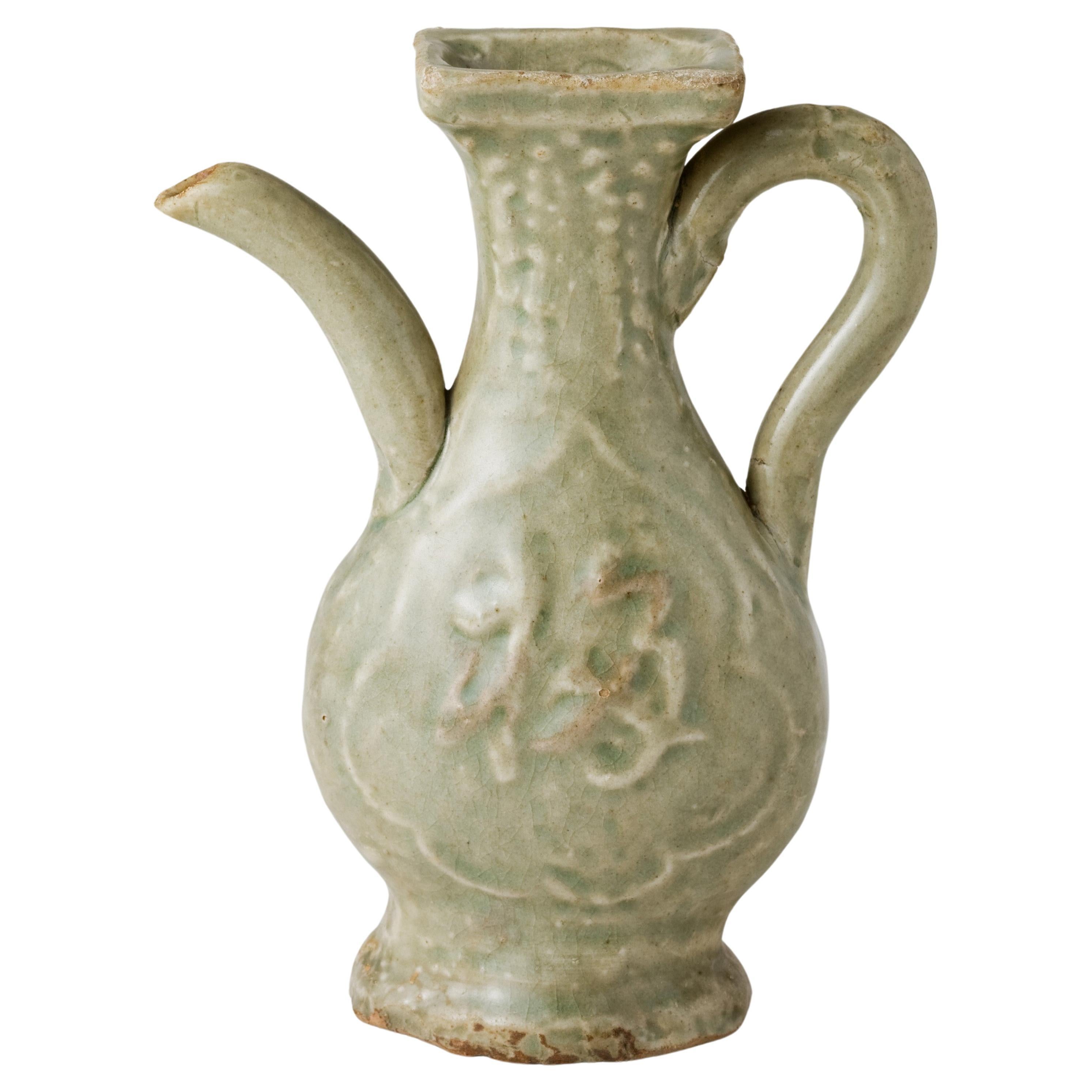
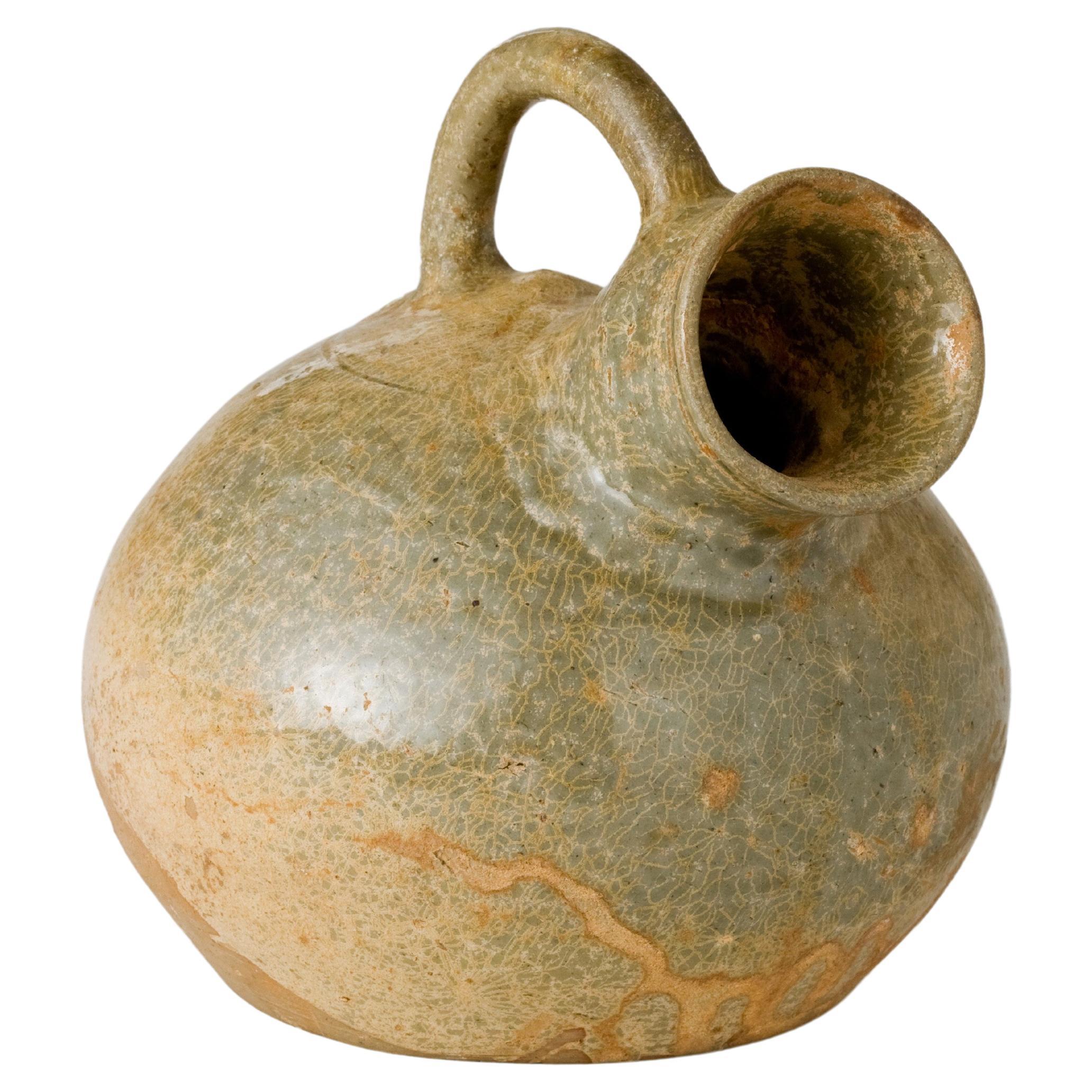
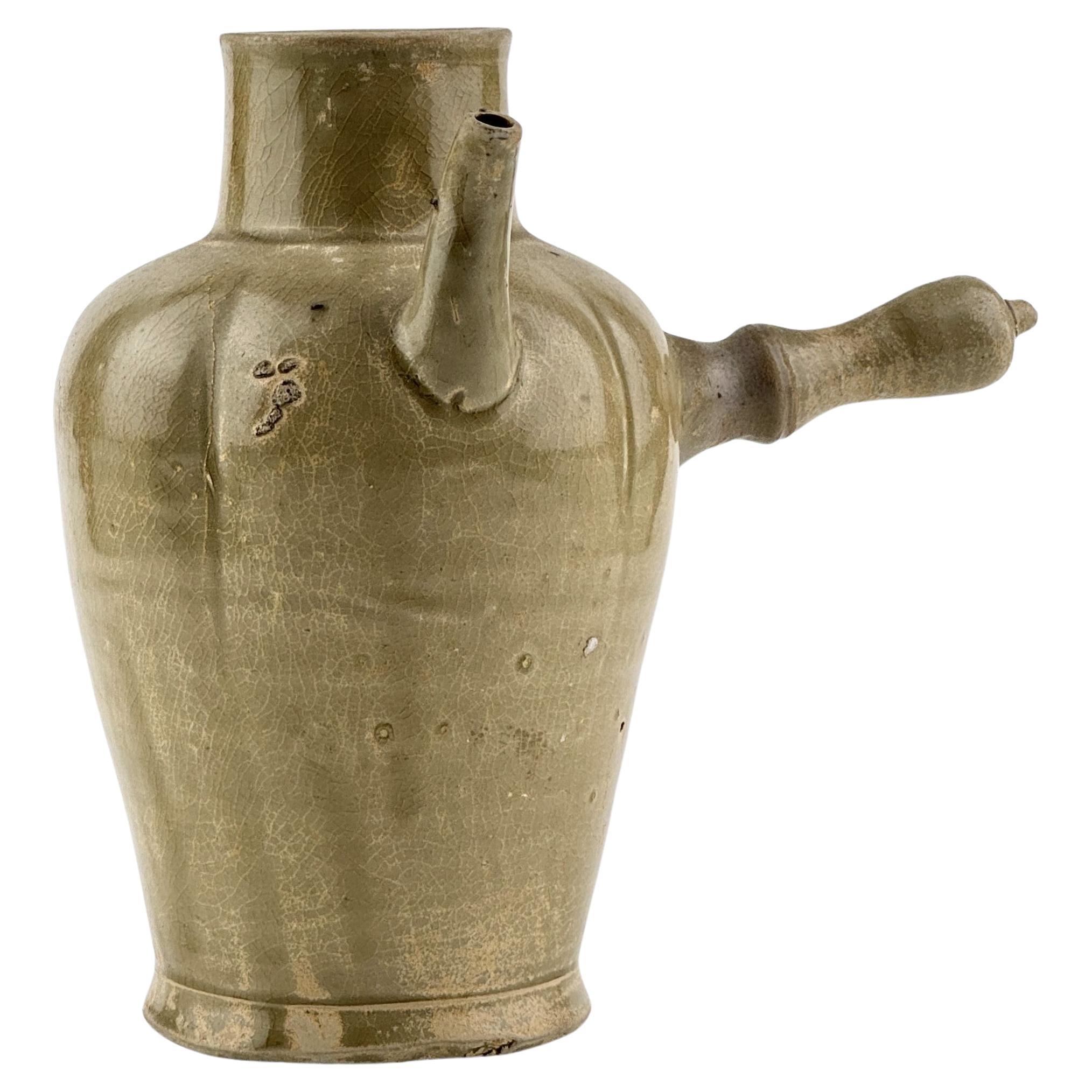
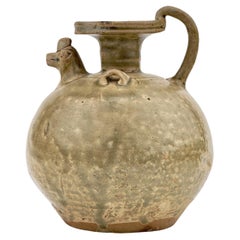
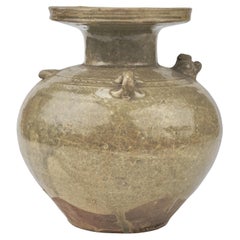
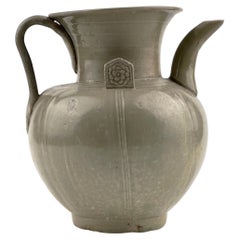
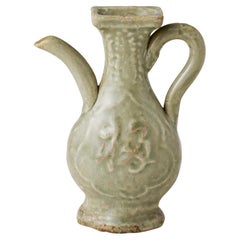
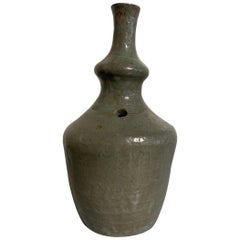
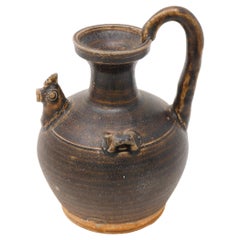
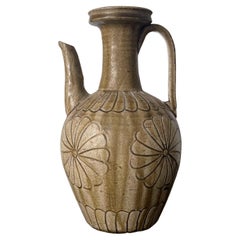
![Antique Chinese pottery green-glazed vase/[Liao Dynasty]/10th century](https://a.1stdibscdn.com/antique-chinese-pottery-green-glazed-vase-liao-dynasty-10th-century-for-sale/f_54872/f_442987721743342424199/f_44298772_1743342424463_bg_processed.jpg?width=240)